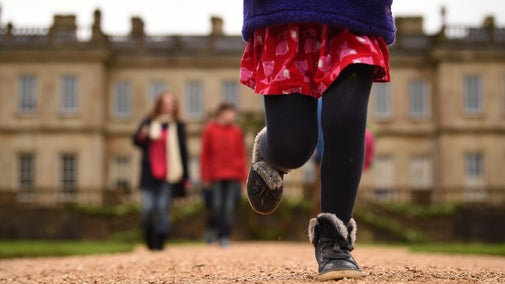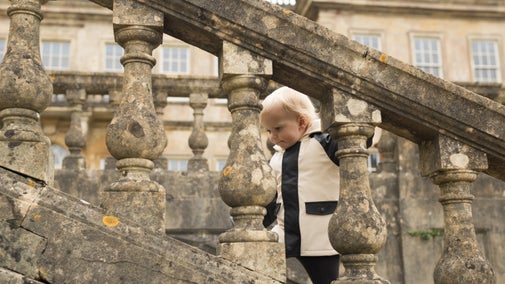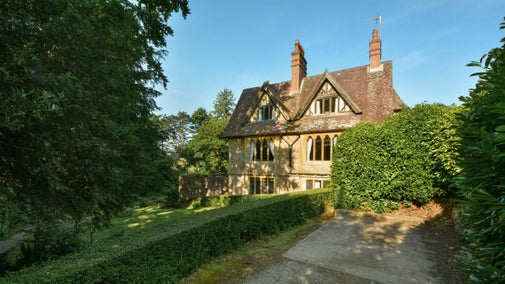
Become a member
Join today and help protect nature, beauty and history – for everyone, for ever. Enjoy access to more than 500 places with National Trust membership.
Ancient parkland, 17th-century house and garden
Dyrham, near Bath, South Gloucestershire, SN14 8HY

| Asset | Opening time |
|---|---|
| Parkland | 10:00 - 16:00 |
| Garden | 10:00 - 16:00 |
| House | 11:30 - 15:00 |
| Tea-room | 10:30 - 15:30 |
| Shop | 10:30 - 16:00 |
| Second-hand bookshop | 10:00 - 15:30 |
| Basement | 10:00 - 15:30 |
| Car park | 10:00 - 16:30 |
| Ticket type | With Gift Aid | Without Gift Aid |
|---|---|---|
| Adult (18+) | £23.10 | £21.00 |
| Child (5-17) under 5s free | £11.60 | £10.50 |
| Family (2 Adults and up to 3 children) | £57.80 | £52.50 |
| Family with one adult | £34.70 | £31.50 |
| Ticket type | With Gift Aid | Without Gift Aid |
|---|---|---|
| Adult (18+) | £25.30 | £23.00 |
| Child (5-17) under 5s free | £12.70 | £11.50 |
| Family (2 Adults and up to 3 children) | £63.30 | £57.50 |
| Family with one adult | £38.00 | £34.50 |
Play area at Old Lodge in the parkland
Assistance dogs across the whole site only due to the presence of deer
Second-hand bookshop open daily
Located at Old Lodge in the parkland. Open daily March to October, weekends in term time November to February
Trails and activities for families in the school holidays, term-time sessions for pre-schoolers on Tuesdays from March to October and a play area open all year round at Old Lodge in the parkland
Tours of the garden and parkland available on certain days - please check events section for details
Open on selected days
Picnic tables at Old Lodge in the parkland. Picnic areas on grass in the garden's orchard and on the East Front in front of the house
Part of the main shop
Open daily
Steep parkland. Cobbled areas. Blue Badge parking. Accessible toilets. Mobility vehicle. Wheelchairs available. Patchy phone signal. House ground floor accessible.
The parkland is steep and uneven in part. The house's ground floor, exhibition, garden, tea-room and shop have level access.
There are 12 designated spaces for blue badge holders in the main car park, three hard standing and nine on gravel.
We have fixed induction loops at all our tills.
There is a tablet and photobook available containing images of the first floor for visitors who cannot access it via the staircase. Please ask a volunteer or member of staff.
The parkland is steep and uneven in part.
We currently have two seven seat vehicles to transport anyone who cannot manage the hill from the car park to the house/garden. One of these is wheelchair accessible. It runs throughout the day from the car park to the bottom of the site where the house, garden, shop and tea-room are located.
There are four wheelchairs and a powered mobility vehicle (scooter/tramper) available to borrow. Please speak to a member of staff on arrival at Visitor Reception or call/email before visiting to book.
Main entrance - what3words: ///marching.consoles.butterfly
This map details walking routes and areas of interest around the 270-acre site.
Assistance dogs are welcome throughout Dyrham Park but we do not allow other dogs on site.

A fine example of baroque architecture, the house was created by colonial administrator William Blathwayt in the late 17th century.
The 270-acre ancient rolling parkland is home to a vast array of trees and has far-reaching views.
Formal borders, idyllic ponds, a wildflower orchard and wooded terraces are all features of the varied garden.
Indoor tea-room open daily decorated in Delft-themed blue and white. Refreshment kiosks open on busy days. Café and ice cream kiosk at Old Lodge in parkland (weekends only in winter).
Shop with a range of cards, gifts souvenirs, foods and plants. Second-hand bookshop.
Exhibition space in reimagined rooms previously never opened to the public. Open each day subject to volunteer numbers.
Newly revamped play area in the parkland at Old Lodge including a café, ice cream kiosk and toilets.
A herd of fallow deer roaming free in the 270 acres of ancient parkland.
The main phases of conservation and decorative work in the house at Dyrham Park are now complete and you can explore beautifully presented rooms, delve into the house's history and discover what it was like to live in the 17th century.

Dyrham Park’s 17th-century inspired West Garden, ponds perry orchard and 270 acres of parkland are filled with seasonal interest and great places to spot nature.

Find out what’s on for families this season at Dyrham Park with information on upcoming events and year-round facilities.

Come and join our new group for pre-schoolers and their families inside the house's Tasting Kitchen at Dyrham Park in the new year running on Tuesday mornings in January and February in term time.

The latest exhibition explores the historical events and characters of the late 17th century and how they influenced William Blathwayt while he created the Dyrham Park we know today.

The 270-acre parkland at Dyrham is a great place to explore the outdoors and enjoy a walk, whatever the time of year.

The Prospect Walk at Dyrham Park guides you to the best points around the parkland to enjoy views across the Cotswold hills and the Bristol Channel.

Enjoy a ramble through the past on this family-friendly trail through Dyrham's parkland. This is a landscape that's steeped in history and each waypoint of this walk reveals a different clue from days gone by.

Stroll through open parkland and explore tranquil woodland on the circular terraces walk at Dyrham Park.

After exploring the house and garden, refuel with a tasty treat from the tea-room, café at Old Lodge or tea garden kiosk. Whether sweet or savoury, there's bound to be something to tempt you. Afterwards, take home a gift from the shop, where there's a wide range of products, from locally made chutneys to fun family books.


In the centre of Lacock village, this 15th-century cottage is packed full of charm and makes a cosy base for exploring Lacock Abbey and the countryside nearby.

Gather your family or friends and stay in this unique Grade I-listed manor house on the edge of the rolling Cotswolds countryside.

On the Tyntesfield estate, this former hunting lodge has an octagonal summerhouse and farmland views.

This Victorian gate lodge has been elegantly restored and has a huge private garden.

On the edge of the Tyntesfield estate, this Gothic Revival style house makes a striking holiday escape.
An expert volunteer guide will lead you around the 270 acres of parkland to learn more about the site's history, archaeology, management and significance. At 10.30am and 1.30pm on selected days.
Want to find out more about Dyrham's garden? Why not join one of our expert volunteer guides on a tour?
Come and join our new group for pre-schoolers and their families inside the house at Dyrham Park in the new year running on Tuesday mornings in January and February in term time.
Join a tour guide to discover Dyrham village in the summer of 1704. Learn about how the village was connected to the estate and interesting facts about the villagers at that time. Please be aware that this walk has a limited number of places....
Join a guide for a special tour to find out about the natural springs and hidden water chambers in the hillside to the mysterious underground well and stone structure by the lake to track the 'curious water works' of Dyrham Park.
Join us for half-term fun this February half term at Dyrham Park.
The popular parkland session for pre-schoolers is back for spring 2026 with nature activities each Tuesday morning in term time.
This spring, treat the whole family to a world of adventure at Dyrham Park on an Easter trail with a fun, festival feel.
Dyrham Park was created in the 17th century by William Blathwayt. It is an early example of how a fortune made from empire was invested in a landed estate, transforming Dyrham into one of the most notable stately homes of its age.
The 270-acre (110 hectare) ancient steep and sloping parkland is full of magnificent trees and breathtaking views and space for young explorers to run free, be in nature and tick off challenges on their 50 things list.
Splendid borders, idyllic ponds and a wildflower orchard are all features of the stunning garden which is being sensitively developed as a 21st-century garden with echoes of the past.
Visitors can get a flavour of the life of William Blathwayt in the late 1600s by stepping into the impressive baroque mansion house with its collection of fine art and Dutch Delftware. His years as a diplomat in Europe, and his several colonial and administrative positions in government, helped to hone – and indulge – his increasingly refined taste.
There is history of occupation at Dyrham Park from ancient times. Find out about the people and families who have added their stories to Dyrham Park.

Dyrham Park has a long history with deep connections to colonialism and the British Empire, all of which is reflected through the history of three prominent families.

Learn about some of the prized paintings and objects in the collection at Dyrham Park, from a triptych painting to a collection of Delft ceramics.

Discover more about the project to transform Dyrham Park for the future with new facilities whilst caring for the past.
Many of the places in our care helped bring the Bafta-winning Poldark series to life, including lots of coast and countryside areas that are rich in mining and Cornish history.

Dyrham Park relies on its volunteers to help care for the house, garden and parkland as well as working with visitors. We’re always looking for new volunteers to join the team.


Join today and help protect nature, beauty and history – for everyone, for ever. Enjoy access to more than 500 places with National Trust membership.
By sharing your email address you’re agreeing to receive marketing emails from the National Trust and confirm you’re 18 years old or over. Please see our for more information on how we look after your personal data.